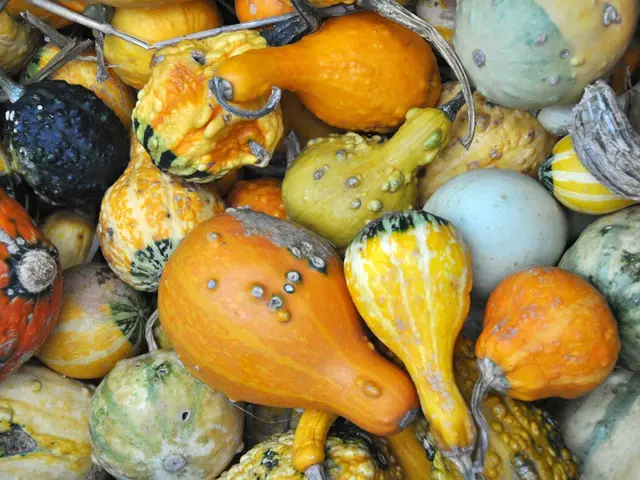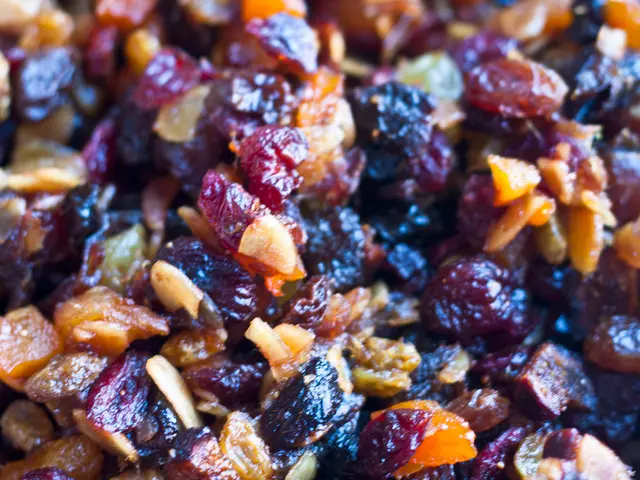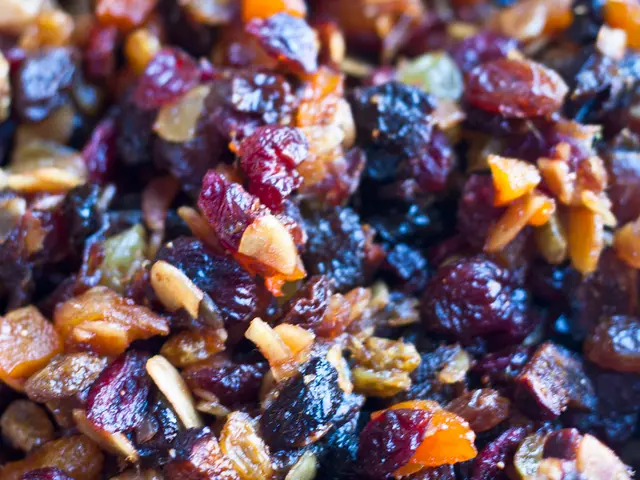Abundant Potential of the Desert Date Fruit, or Velvet Tamarind, in Indian Agriculture
Expand your farmlands with a hidden treasure: the Black Velvet Tamarind! Known as Dialium guineense or Dialium cochinchinens, it's an unsung hero in the world of edible fruits. This dark, velvety powerhouse is popularly called the "black velvet tamarind" due to its captivating appearance. In parts of Africa and Asia, it's a cherished food, but India, with its expanding interest in traditional, health-promoting foods, offers a brilliant opportunity for this fruit to flourish.
Plant Features and Growing Conditions
Unlike the common tamarind (Tamarindus indica), black velvet tamarind isn't closely related. It produces small, hard-shelled pods filled with a delicious, tangy-sweet pulp. Reaching up to 30 meters, the tree is adaptable with a preference for warm, humid tropical climates. It prospers in loamy, well-drained soils, making it an excellent candidate for agroforestry and dryland agriculture. As a hardy, drought-resistant tree, it can thrive in India's tropical and sub-tropical zones, including the Northeast, Eastern Ghats, Andaman Islands, Kerala, and parts of Maharashtra and Karnataka.
Nutritional and Medicinal Value
The nutritional benefits of black velvet tamarind are off the charts! Packed with carbohydrates, dietary fiber, iron, calcium, magnesium, potassium, vitamin C, and other vital micronutrients, it provides a unique blend of energy-boosting compounds. It's especially rich in antioxidants and polyphenols, with potential anti-inflammatory, antimicrobial, and antidiabetic properties.
In traditional medicine, various parts of the tree have been used to treat an array of ailments. The pulp is used to treat constipation, boost iron levels for anemia, and manage blood sugar levels. Its leaves are brewed into teas to fight fever and inflammation, while the bark, seeds, and other parts provide treatments for ulcers, hypertension, and microbial infections. As a potential nutraceutical ingredient, its reputation as a health-promoting superfood continues to grow.
Culinary and Traditional Uses
Though less known in India, black velvet tamarind is a staple in African and Southeast Asian cuisines. The tangy-sweet pulp is eaten raw or used to make refreshing drinks, candies, jams, and chutneys. It is often combined with jaggery (unrefined sugar) or honey to balance the flavor. In some regions, the leaves are used in soups or fermented preparations. Beyond its culinary allure, the tree offers versatility across various domains. The wood is dense and termite-resistant, making it suitable for crafting tools, furniture, and even charcoal. Chewing the bark is an age-old practice for maintaining oral hygiene. The seeds contain oils that can be extracted for use in cosmetics or soaps, further highlighting its multifunctionality.
The Time is Ripe for Change
Velvet tamarind remains an underutilized crop in most regions, primarily due to slow growth, lack of propagation knowledge, and limited awareness of its commercial potential. The absence of organized value chains or processing infrastructure discourages farmers from investing in the crop. However, with modern propagation methods, such as grafting, tissue culture, and seed scarification, it's possible to speed up growth and ensure consistent crop yields. By supporting research and pilot programs, velvet tamarind can be transitioned from a forest fruit into a viable orchard crop.
India's agricultural landscape is undergoing a shift towards sustainable agriculture, indigenous crops, and health-focused diets. Aligning perfectly with national priorities, the adaptation of black velvet tamarind could revolutionize India's orchards, kitchens, and wellness products. This forgotten fruit holds promise as a valuable asset in India's journey toward a sustainable, health-conscious agricultural future. With careful nurturing, black velvet tamarind could become a staple in India's thriving food culture.
References:1. Agroforestry.co.uk (2021). African Tamarind (Dialium guineense) - A versatile, drought-tolerant, nitrogen-fixing species for agroforestry. https://www.agroforestry.co.uk/species/tropical-afro-alpine/african-tamarind-dialium-guineense-a-versatile-drought-tolerant-nitrogen-fixing-species-for-agroforestry/2. The Medicinal Plants of Lesser Himalayas (Pant & Kumar, 2012)3. Journal of Medicinal Plants Research (2019), 13(1), 85-100. https://www.academicjournals.org/journal/JMPR/article-full-text-pdf/14549879346c/JMPR1301085100_Paper_html
- The nutritional profile of the black velvet tamarind makes it a potential ingredient in health-and-wellness products, especially those focusing on nutrition and cooking.
- As part of India's expanding interest in traditional, health-promoting foods, the black velvet tamarind, known for its fitness-and-exercise benefits, could be an excellent addition to global-cuisines and healthy-cooking practices.
- With its versatility in food and drink, as well as its medicinal properties, black velvet tamarind could contribute significantly to India's lifestyle and food-and-drink market, incorporating it into a more sustainable and health-conscious agricultural future.
- By improving propagation methods and investing in research, India can cultivate black velvet tamarind orchards, promoting fitness-and-exercise, health-and-wellness, and creating opportunities for the science and lifestyle sectors, all while supporting its commitment to sustainable agriculture and indigenous crops.








